#Natural Dyes
Explore tagged Tumblr posts
Text
Foragers! Many parts of phragmites are edible! Their flowering tops make a green dye (natural green dyes are surprisingly rare)! The stalks can be used for basketry, thatch, trellis stakes (makes sure they are fully dried to avoid accidental propagation), or whacking your siblings! And if you live somewhere where they are invasive you don't have to worry about sustainable foraging habits! Take as much of those fuckers as you can.

I don't know. I just don't know
50K notes
·
View notes
Text
Child's Sock from Egypt, c.250-350 CE: this colorful sock is nearly 1,700 years old

This sock was discovered during excavations in the ancient city of Oxyrhynchus. It was likely created for a child during the late Roman period, c.250-350 CE.
Similar-looking socks from late antiquity and the early Byzantine period have also been found at several other sites throughout Egypt; these socks often have colorful, striped patterns with divided toes, and they were crafted out of wool using a technique known as nålbinding.

Above: a similar child's sock from Antinoöpolis, in Egypt, c.250-350 CE
The sock depicted above was created during the same period, and it was found in a midden heap (an ancient rubbish pit) in the city of Antinoöpolis. A multispectral imaging analysis of this sock yielded some interesting results back in 2018, as this article explains:
... analysis revealed that the sock contained seven hues of wool yarn woven together in a meticulous, stripy pattern. Just three natural, plant-based dyes—madder roots for red, woad leaves for blue and weld flowers for yellow—were used to create the different color combinations featured on the sock, according to Joanne Dyer, lead author of the study.
In the paper, she and her co-authors explain that the imaging technique also revealed how the colors were mixed to create hues of green, purple and orange: In some cases, fibers of different colors were spun together; in others, individual yarns went through multiple dye baths.
Such intricacy is pretty impressive, considering that the ancient sock is both “tiny” and “fragile."
Given its size and orientation, the researchers believe it may have been worn on a child’s left foot.

Above: child's sock from Al Fayyum, Egypt, c.300-500 CE
The ancient Egyptians employed a single-needle looping technique, often referred to as nålbindning, to create their socks. Notably, the approach could be used to separate the big toe and four other toes in the sock—which just may have given life to the ever-controversial socks-and-sandals trend.
Sources & More Info:
Manchester Museum: Child's Sock from Oxyrhynchus
British Museum: Sock from Antinoupolis
Royal Ontario Museum: Sock from Al Fayyum
Smithsonian Magazine: 1,700-Year-Old Sock Spins Yarn About Ancient Egyptian Fashion
The Guardian: Imaging Tool Unravels Secrets of Child's Sock from Ancient Egypt
PLOS ONE Journal: A Multispectral Imaging Approach Integrated into the Study of Late Antique Textiles from Egypt
National Museums Scotland: The Lost Sock
#archaeology#artifact#history#anthropology#child's sock#ancient textiles#ancient egypt#roman egypt#fabric arts#knitting#fashion#naalebinding#art#classical antiquity#children in archaeology#natural dyes#wool#yarn#ancient clothing#children#roman#sewing#egyptology#cute little stripy socks
2K notes
·
View notes
Text
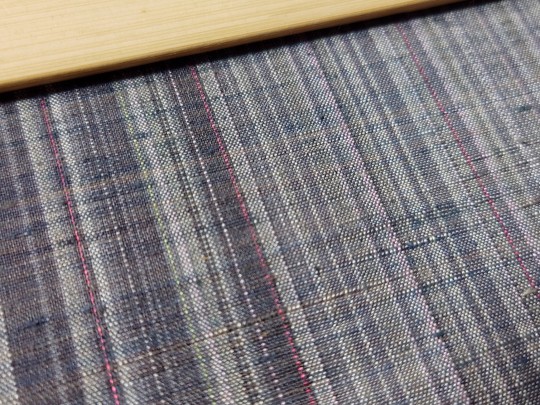
新しい着尺を織りはじめました。
I've just started to weave a new kimono fabric.
5K notes
·
View notes
Text



Rest of my first takes on natural dyes from this autumn. It's been a real pain to get a photo accurately showing the real colors, and I still failed, they came out very pale comparing to real life 🥲 I really like how hibiskus flower and oak galls ones turned out though.
It's been really satisfying and I got some pretty interesting colors, but I probably won't redo most of them anytime soon, just bc of the sheer weight of the dyeing material needed proportionally to the weight of wool (for example, I was collecting onion skins for a year and got only enough to dye about 100g of yarn. so). Well, except for goldenrod which is growing everywhere around where I live, and oak galls, because there's just SO. MANY. of them this year.
Dyes used, from left to right:
Top row: (first two) dried hibiskus flower on alum + cream of tartar mordant, goldenrod on alum + cream of tartar mordant, onion skins on alum + cream of tartar mordant, onion skins with alum modifier;
Bottom row: staghorn sumac berries on alum + cream of tartar mordant, tansy with iron modifier, oak galls with iron modifier, dried walnut husks with iron modifier.
All yarn spun by me from mixed wool of Polish sheep breeds.
273 notes
·
View notes
Text
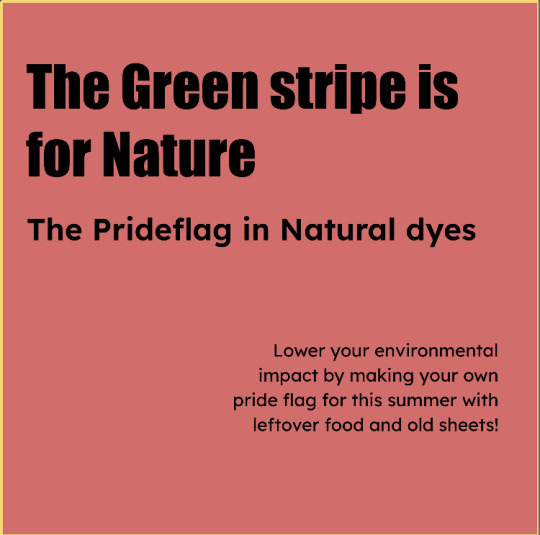
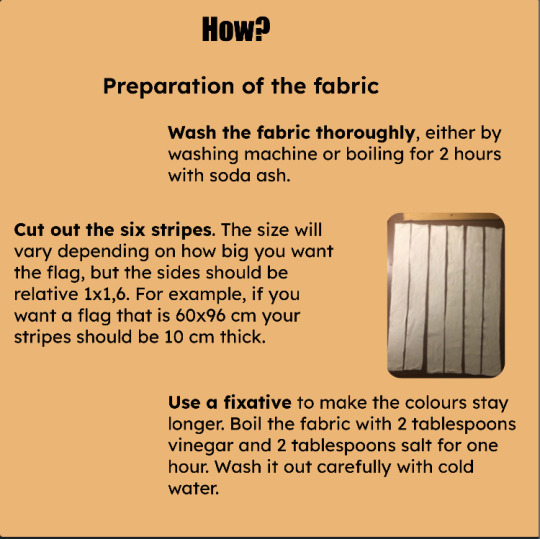



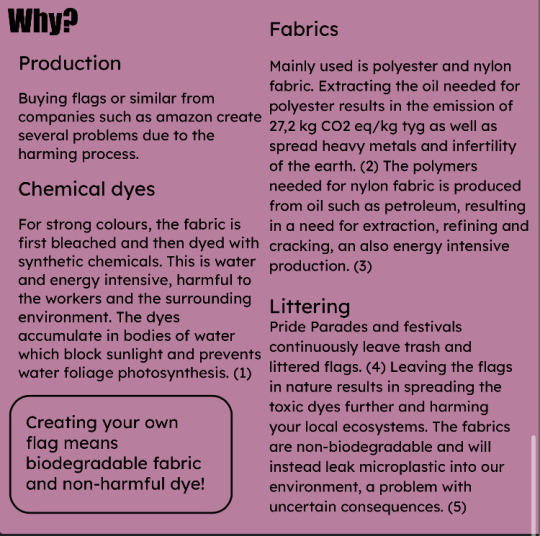
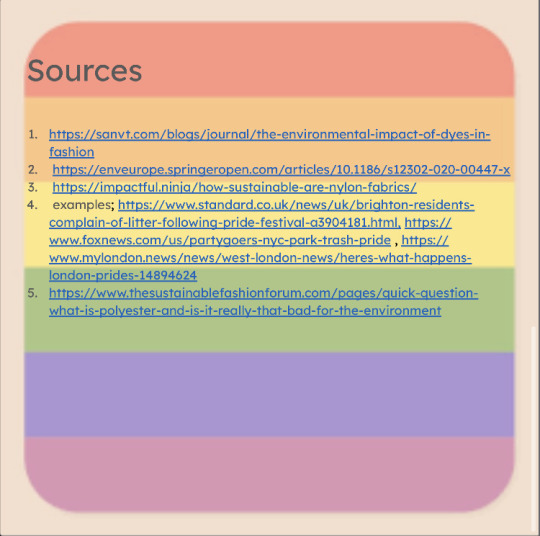
The results will be a unique and slightly rustic flag. In general, I want people to be aware of their impact when it comes to buying textiles, and that there is alternatives when wanting new clothing or similarities.
#environment#ecopunk#reduce reuse recycle#upcycle#recycling#lgbtqia#sustainability#ecofriendly#eco pride#diy#diy craft#cottagecore#pride#punk#environmentalism#natural dyes#dyeing
643 notes
·
View notes
Text



quilt-inspired barnyard bandanas block printed with natural dyes 🌱 (eucalyptus, madder, and weld)
ID: three photos of bandanas lying on the grass. they are each patterned with quilt squares and prints of strawberries, fish, snakes, and mushrooms, and printed in dark brown, red, and tan.
319 notes
·
View notes
Text
Pland dyeing some SW Merino with black hollyhock flowers


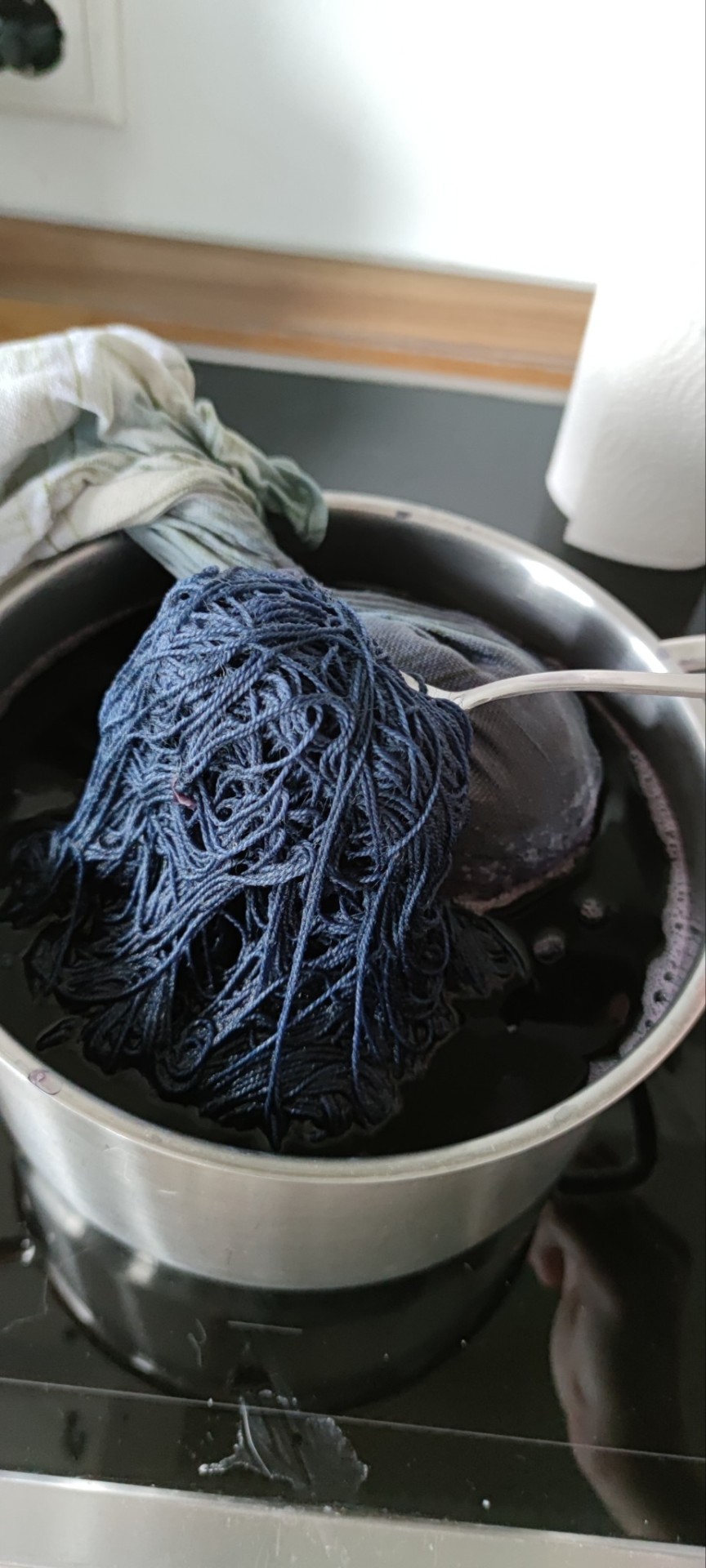
Small test that marinated in the cold dye bath for 1 minute
Yarn was mordanted on 24. November and since then was kept damp

(on the logwood yarn because I want to weave them together)
476 notes
·
View notes
Text

Natural Easter Egg dyes...
#Ostara#Easter#Natural Easter Egg Dyes#natural dyes#colour my world#tis the season#wheel of the year#easter#easter eggs
315 notes
·
View notes
Text
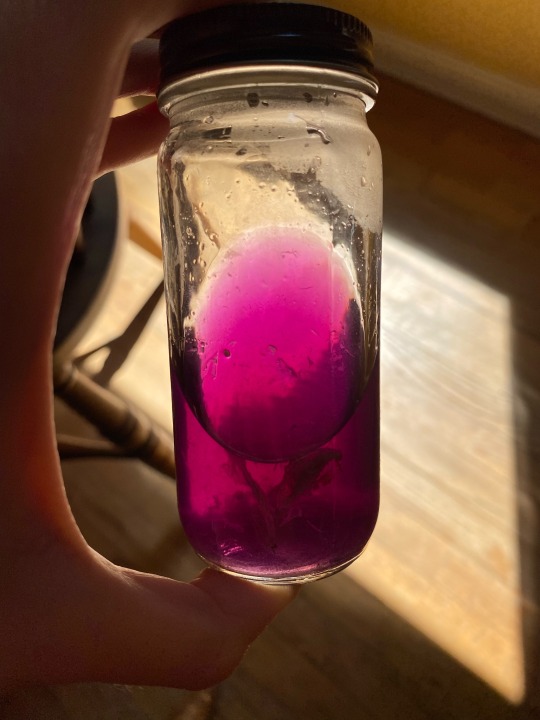
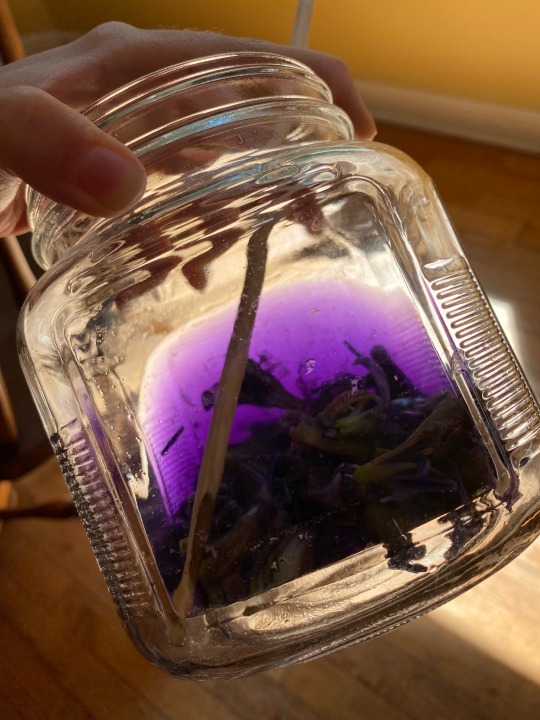
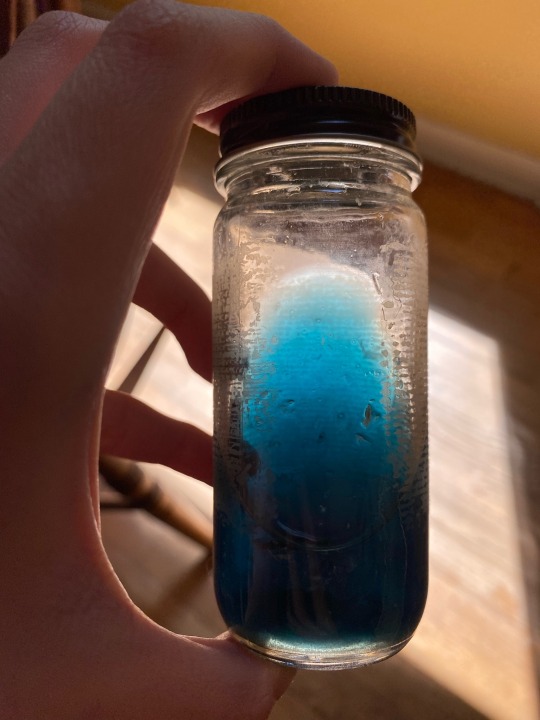
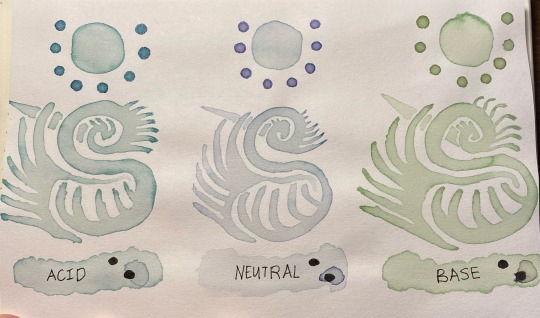
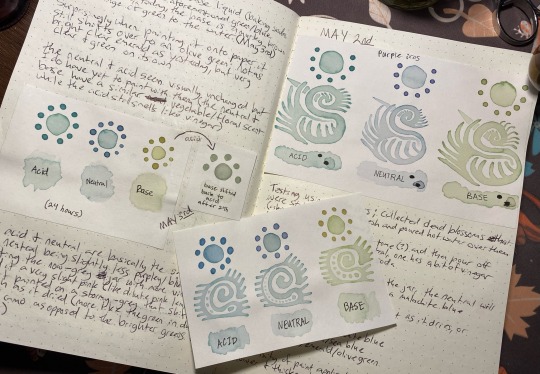



Current sample sheets and a couple pics of the liquid i've been using as watercolor, all extracted from purple iris or common violet in slightly different ways, and pH altered to give different colors due to anthocyanins (which i have been reading a bunch about and they ended up being a lot more complex than expected, and deserve their own text-heavy post, this is merely a pretty pictures post to prove i'm alive)
#art#watercolors#painting#anthocyanins#purple iris#common violet#flower paint#flower pigments#homemade paint#crafts#traditional art#natural dyes
1K notes
·
View notes
Text
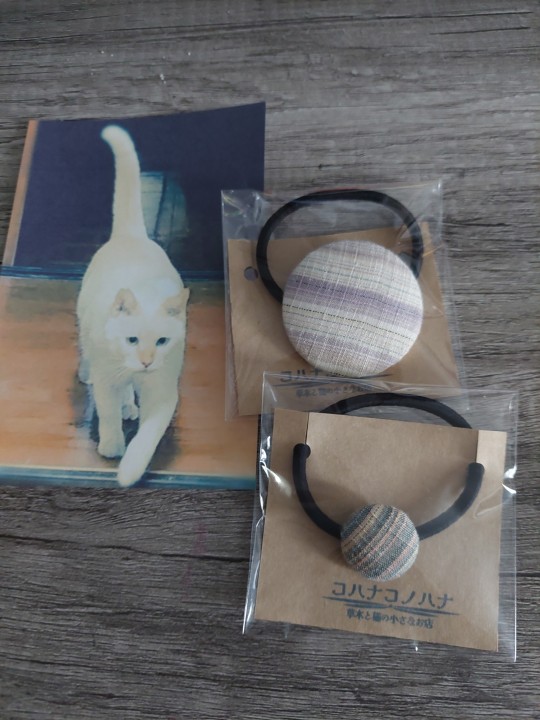
I wanted to say thank you landlady @kohanakonohana for these beautiful hair ties! They're absolutely gorgeous, will share pictures of them in my hair later! She even included this adorable postcard of @straycatj , it's very cute! Everyone go support landlady!
222 notes
·
View notes
Text

I haven't been posting much art because I'm back to school I've spent much of January and February fighting for my life on a natural dyes project. I'm gonna use (some of) these to knit a tuque/chullo!
Dyes used were: Red - Madder Blues - Indigo Yellows - Osage Greens - Osage + Indigo Orange - Osage + Madder Caramel brown - Cutch
#i wanted to make teal as well but the osage yellow was too strong and I only got more green.#Next time i'll try again with a weaker yellow dye like idk. mirobalan or cosmos or goldenrod.#but also indigo is a huge PITA to work with so i'm kind of dreading doing this again!!#textile arts#fibre arts#art by me#natural dyes#madder#indigo#cutch#osage#WIP
43 notes
·
View notes
Text

natural hibiscus dye on a skein of wool!!! loooooook at the coloooooor 🥰 it also smells like rosa jamaica (the drink) which is a pleasant surprise
I had initially dyed this skein with blackberry dye but since I had also eaten most of the blackberries, it wasn’t a very deep dye and so I just over dyed it with hibiscus . I simmered that pot of hibiscus for hours and reduced as much as possible and I am very very happy I spent that time, it was worth it to get this color result !
#zue speaks#fiber art#fiber crafts#handdyed fiber#natural color#natural dyes#hibiscus#dyed yarn#hand dyed wool
142 notes
·
View notes
Text

ヌノのとこさわると
たぶん ちょーおこられるですので
She must be angry if I would touch her fabrics on the loom...
1K notes
·
View notes
Text



Maybe my favorite result from my first attempts at natural dyes this September: goldenrod on alum + cream of tartar mordant. If it turns out the color holds well, I'm definitely going to make more next year, because this shade of yellow is brilliant and goldenrod is abundant and invasive in my neck of the woods.
Yarn was spun by me, from mixed wool of couple of Polish sheep breeds.
135 notes
·
View notes
Text
Natural dyeing adventures
(to be clear, this is a novel. Enter at your own risk.)

So it's been a couple of years since I last experimented in natural dyeing - maybe even 5? beyond periodically tea-dyeing whites that are too bright or pinks that are too pink to soften them a little, that one stuck. But as we all know, once a hobby always a hobby; it takes only one drop for the dam to overflow. This drop was deciding that if I"m going to go to a medieval-themed market, I might as well go the whole hog and dye the clothing myself, and was fuelled by reading that dock root (an abundant weed) can create a reddish dye.
The floodwaters are rushing.
Naturally, the first thing that I discovered on starting to dig was that I had neither my dye pots nor my mordants with me*. No worries, one of the plants I wanted to try out (sorrel) is a food plant, and is therefore allowed in my ordinary pots; I also had exactly one 10g skein of pre-mordanted yarn, and word has it that sorrel is supposed to be a substantive dye** although experience suggests most substantive dyes DO benefit from mordanting anyway, so I chucked in a small snippet each of linen, silk and cotton to see if anything did catch.*** Retrospect suggests that perhaps the silk WAS mordanted – plausible, since I bought it specifically with the idea of naturally dyeing it – given that it took up the dye much more strongly than any of the other options, including the wool.****

Exhibit A: sorrel root, dyed immediately; roughly 5:1 dyestuff:fibre by weight; 10min dye extraction then added fibre directly into pot to simmer for an hour; then taken off the pot and left in a glass jar in a manner reminiscent of solar dyeing for a day or so, before curing 12h and then rinsing.***** Each fabric is photographed on top of an undyed snippet of the same fabric. The silk, in particular, took on a rather nice mushroom colour; not at all what I was looking for, and not a colour I’ll personally use for clothing, but there’s definitely dye here. However, while I was simmering this, I read another blog which said they’d had better pinks/reds from dock root by leaving it to ferment for a few days after the initial simmer, so I immediately started a second pot: hence Exhibit B.

Exhibit B: sorrel root, estimate 5+:1 (forgot to weight the fibre); 10 min dye extraction, left to sit with dyestuffs in the water for 3 days, simmered for 1h then left in the water overnight, cured only a few hours because I was impatient, then rinsed and dried.
This gave a peachier colour across the board, including on the two new linen samples, which hadn’t even been washed let alone pre-mordanted. Again the silk took up colour the strongest, although the sample of wool yarn – which frankly I can’t remember if I mordanted or not – took up a bit more colour this time imo.

This has set me a pointer: fermenting helps. At this point I managed to obtain new dye pots (thanks the op shop) and started a new dyebath with dock root. As it’s a related plant, and as I’m aiming for as much colour as I can get, I didn’t even bother with the immediate dye; instead I jumped straight to fermenting it for 3 days, due to dye on Thursday. I’ve also started a second ferment of harakeke/flax seed pods, because I’ve known for a long time that they theoretically give a rather strong colour, but they are ALSO known for an awful smell during the dyeing process, and this is the first time I’ve had an outside setup to do it with. (For the record, the sorrel smells rather like cooking parsnips while dyeing; not something I object to at all).
In the meantime, I’ve been scouring and mordanting my fabric, now that I have the substances I need, so that they’ll be ready to go by the time the dye bath is ready. Pro tip: alum, the most commonly used mordant (both for reasons of safety and because it’s more widely useful than some of the others) can often be found at garden centres, where it’s sold as hydrangea blueing or something similar to that. I could have used knowing that when I first decided to try natural dyeing. Technically there's now a new plant-fibre-specific form of alum available - data that my well-loved dye manual, published in 1998, did not have access to - so I haven't tried it, and don't have time on this project to wait for an online order; regular common-or-garden (ha!) alum it is then. I've also tried a few random plants from around my property for fun - peach leaves, because a branch gifted itself to me yesterday; onion skins, because they're probably my backup for this specific project; blackberry leaves and yarrow are currently sitting on the stove, where they will stand for a day before dyeing with them tomorrow. This is partly so that they develop full colour and partly because I've run out of wool that I think might plausibly be pre-mordanted, and I have to wait overnight for the next skein.
In the meantime, please have my preliminary onion and peach results. These are rinsed, but not yet dried; they'll be slightly paler when dry (and I'll take more accurate photos).

I always forget how bright onion skin dye is. The three warm yellows on the left are all onion, the first, second and third soaks in the same dye bath (at about 2:1 weight because my skeins were smaller than I intended). The third is on unscoured, unmordanted homespun,****** which is frankly impressive - it managed to take up that much dye, after TWO skeins had gone through the dyebath previously, while still having literal sheep grease on it? This is also why this is the only test where the cellulose fibre (mordanted linen) came out darker than the protein.
The peach leaves surprised me! A lot of dyes come out a faint slightly greenish yellow, and I was expecting more of the same. What I wasn't expecting was this almost neon yellow on the wool, with strong uptake on the silk as well. Not a colour I gravitate to, but might be useful when I get my hands on a blue****** to make nice greens. I won't be trying this on cellulose again until I get my hands on some alum acetate though.
In case you want the most important information - peach leaves smell intensely marzipan-y while cooking, blackberry has a pleasant but not dramatic berry smell, both sorrel and dock are reminiscent of parsnip, and yarrow is so strongly medicine-y that I really wish I'd taken the hob outside for that one. You live and learn.
Back soon with more tests and trials!
*substances added to fibre before dyeing it to help the dye stick
**dye that sticks without needing a mordant
***pro tip: keep a snippet of the pre-dyeing fabric, too, so that you can put one on top of the other to see subtle colour changes
****Silk would be expected to take up dye more strongly than cotton or linen. It would NOT be expected to take it up more strongly than wool, especially if the wool is pre-mordanted.
*****The first time I use any natural dyes my goal is mainly to see if I can get ANY meaningful colour. I am not necessarily looking for a replicable process yet, hence the multiple steps.
******this was all I had left
*******guess who has ordered woad seeds! I can grow brassicas so I feel confident I can do woad as well
26 notes
·
View notes
